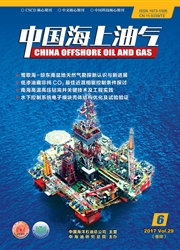

 中文摘要:
中文摘要:
基于南海北部深水区采集的长电缆深大地震剖面和随线重磁资料,以长电缆地震速度构建的岩石圈速度结构与几何分层作为地壳密度初始模型设计的依据,采用地震约束条件下的人机交互重力反演方法,获得了研究区沿地震测线剖面的地壳密度结构和基于三维重力异常建模的岩石圈三维密度结构,揭示出了琼东南盆地各凹陷地壳密度结构特征和沉积充填结构。通过与参考岩石物性参数的对比分析。初步识别出了琼东南盆地大型构造单元上地壳层岩性,从而为加深南海北部深水区深部结构的形成与演化研究提供了新的途径和依据。
 英文摘要:
英文摘要:
Based on the long-cable deep seismic-re flection profiles and the gravity and magnetic data on line in the deepwater area of the northern South China Sea, the lithosphere velocity structure and geometric layering made from the long-cable seis- mic velocity were taken as the grounds for developing the initial model of crustal density. The appli- cation of man-machine interactive gravity inversion under the seismic constraints has resulted in recog nizing crustal density structure along the seismic lines and modeling 3D lithosphere density structure from 3D gravity anomalies in Oiongdongnan basin, revealing the crustal density structure and deposi- tion filling structure for various sags in the basin. By comparing with the petrophysical parameters of reference rocks, the upper crust lithology was ten- tatively identified in the major tectonic units of the basin, therefore providing a new way for probing into formation and evolution of the deep litho- sphere structure in the deepwater area of the northern South China Sea.
 同期刊论文项目
同期刊论文项目
 同项目期刊论文
同项目期刊论文
 Crustal structure of the Tethyan Himalaya, southern Tibet: new constraints from old wide-angle seism
Crustal structure of the Tethyan Himalaya, southern Tibet: new constraints from old wide-angle seism Late Miocene ice sheet elevation in the Grove Mountains, East Antarctica, inferred from cosmogenic 2
Late Miocene ice sheet elevation in the Grove Mountains, East Antarctica, inferred from cosmogenic 2 Dip-slip rate determined by cosmogenic surface dating on a Holocene scarp of the Daju fault, Yunnan,
Dip-slip rate determined by cosmogenic surface dating on a Holocene scarp of the Daju fault, Yunnan, Upper mantle P-wave tomography across the Longmenshan fault belt from passive-source seismic observa
Upper mantle P-wave tomography across the Longmenshan fault belt from passive-source seismic observa An overview of the crustal structure of the Tibetan plateau after 35 years of deep seismic soundings
An overview of the crustal structure of the Tibetan plateau after 35 years of deep seismic soundings Crustal P-wave velocity structure and layering beneath Zhujiangkou-Qiongdongnan basins, the northern
Crustal P-wave velocity structure and layering beneath Zhujiangkou-Qiongdongnan basins, the northern Late Quaternary glaciation of the Tianshan, Central Asia, Using cosmogenic 10Be surface exposure dat
Late Quaternary glaciation of the Tianshan, Central Asia, Using cosmogenic 10Be surface exposure dat 期刊信息
期刊信息
